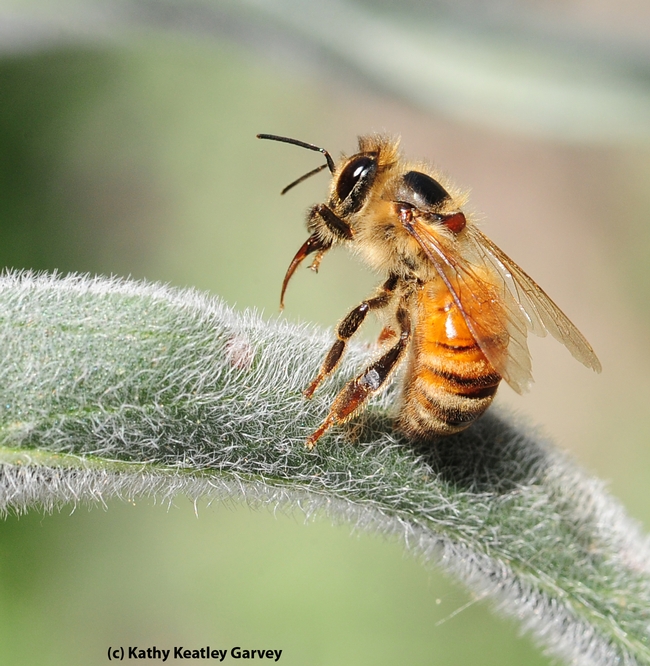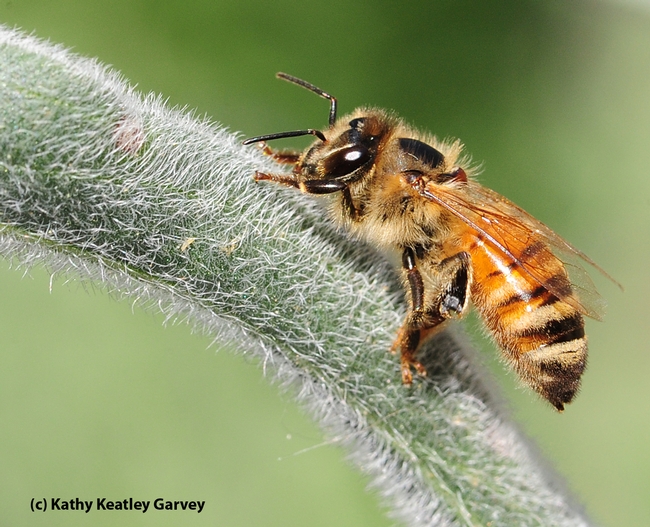"Where do foraging bees go to die?"
That question was asked this week of honey bee guru Eric Mussen of the UC Davis Department of Entomology, who serves as the statewide Extension apiculturist.
"Do they return to the hive? Do they retire and live out their last days inside?" he was asked.
We've all seen worker bees in the throes of death. After all, they live only four to six weeks in the busy season. But the queen bee, which can lay some 2000 eggs a day, quickly replaces them.
"Since we do not know exactly where they go, we say that they fly off in the final moments of life, lose altitude and land on whatever is beneath them, moribund," Mussen says. "They are still able to sting for quite a few minutes, as can be attested to by neighbors who find moribund bees in their lawns or swimming pools, but they die relatively soon. Bees have enzyme systems that deal with flight and when the enzymes give out, so does flight."
Mussen points out that "a few of the dying bees, maybe 15 or so, of the 1,000 or more that die daily (in a colony) during the spring, summer, and fall, do die in--or in front of--the hive."
When those bodies lose some moisture, the "undertaker bees" carry away the lighter-weight bodies and drop them 150 feet or more away from the hive, studies show. "Most of the rest just drop, somewhere, when they no longer can forage or stay in the air," Mussen says. "Bees do fly up to four miles from the hive in any compass direction, so they drop out there in that 50-square mile area."
Attached Images:

